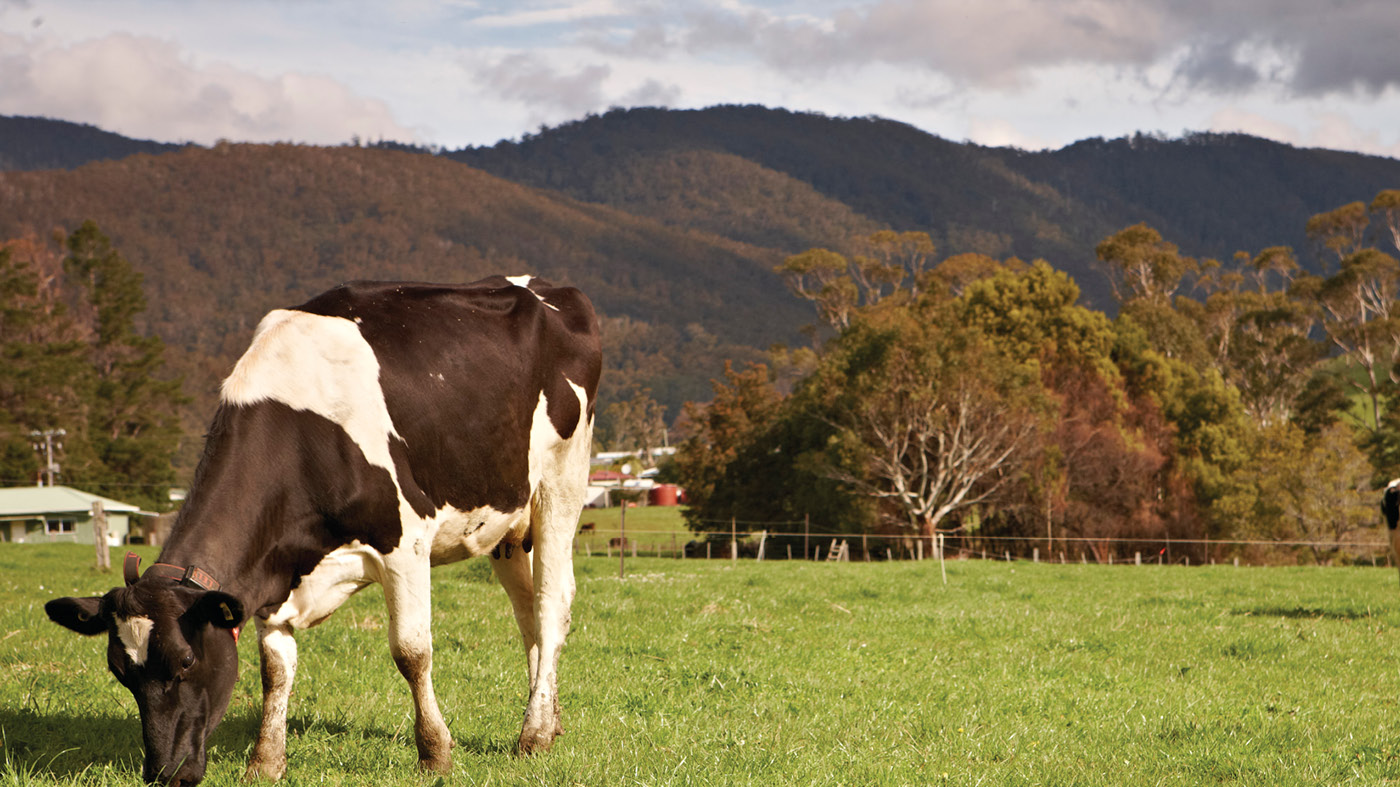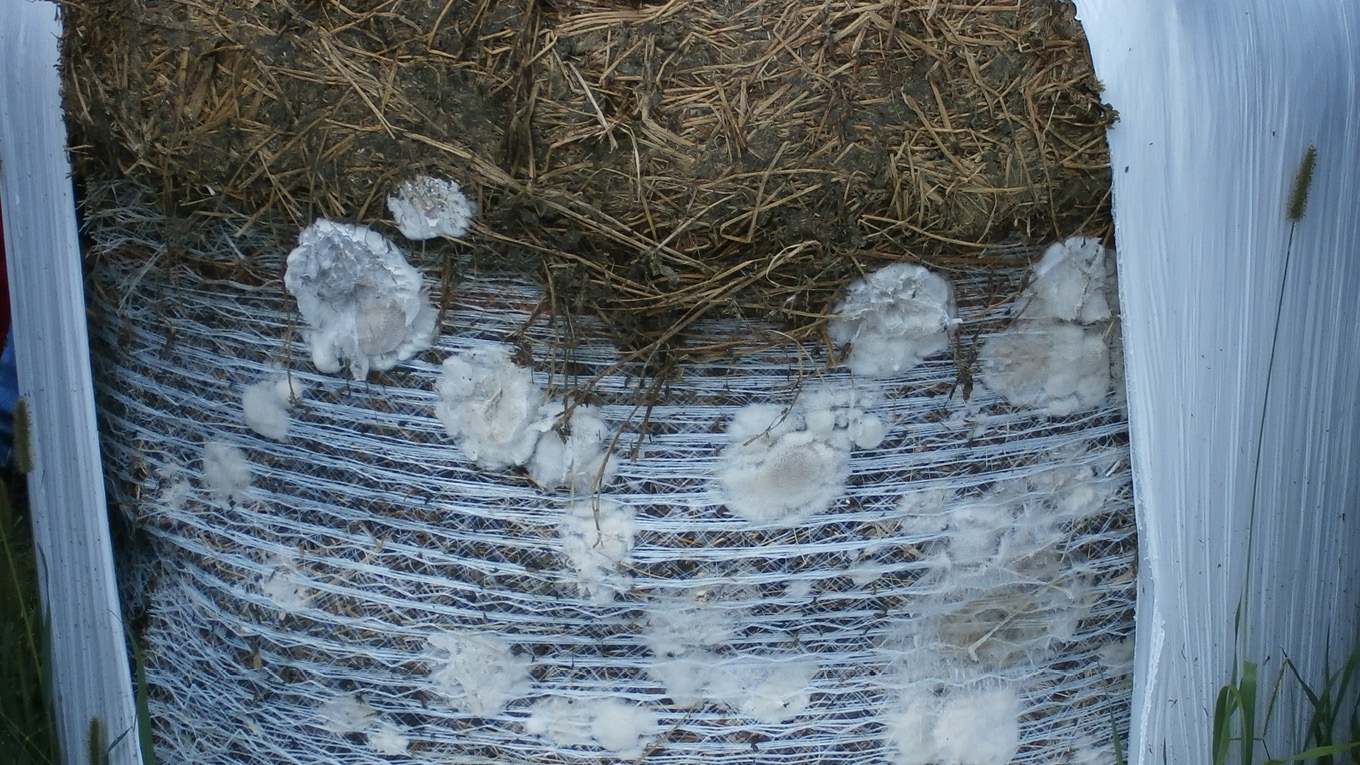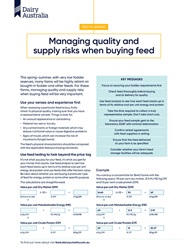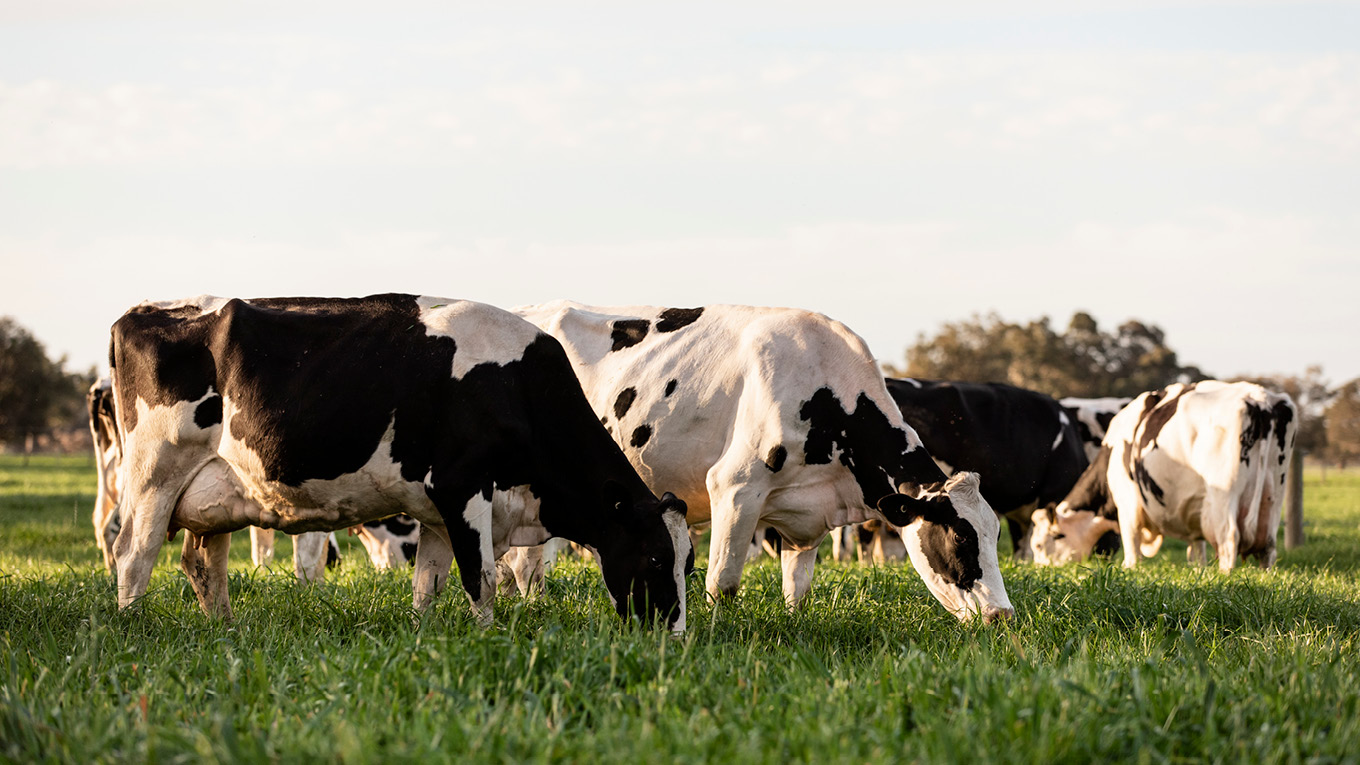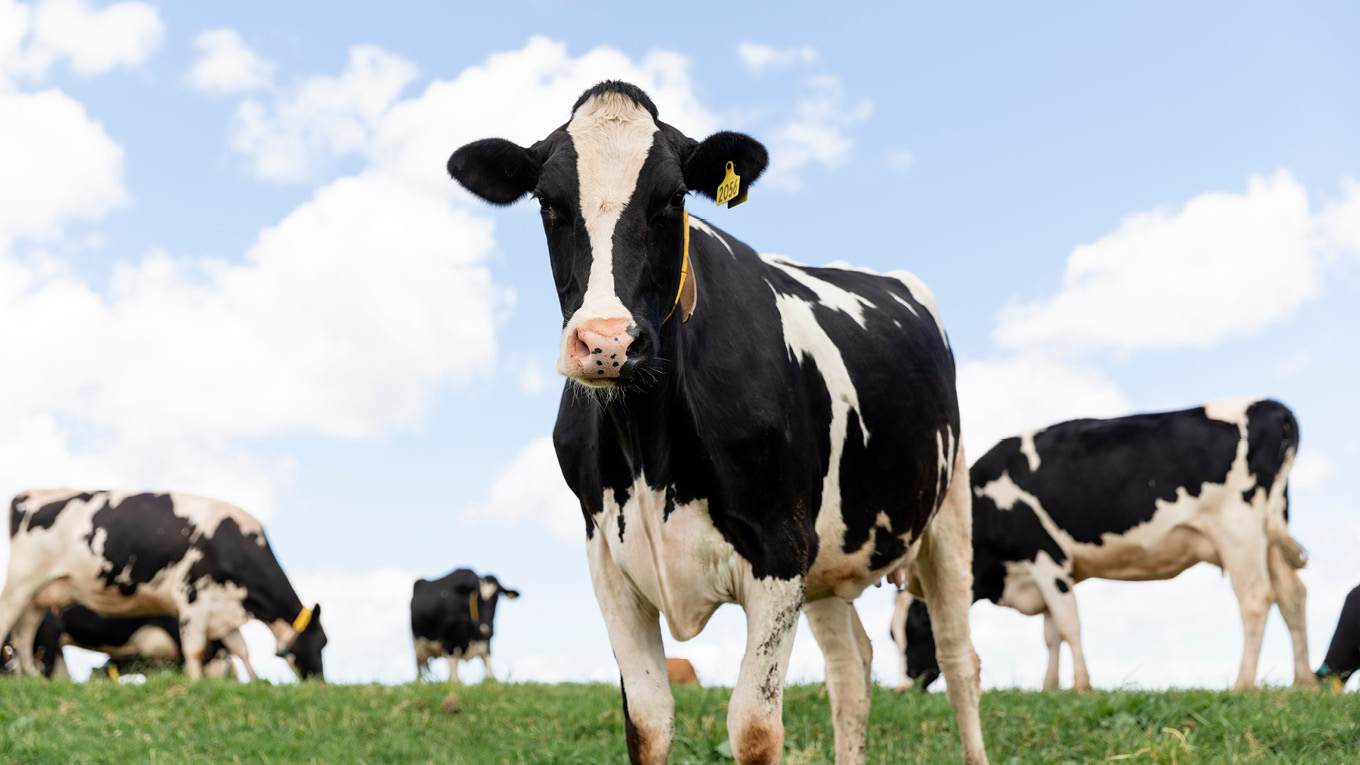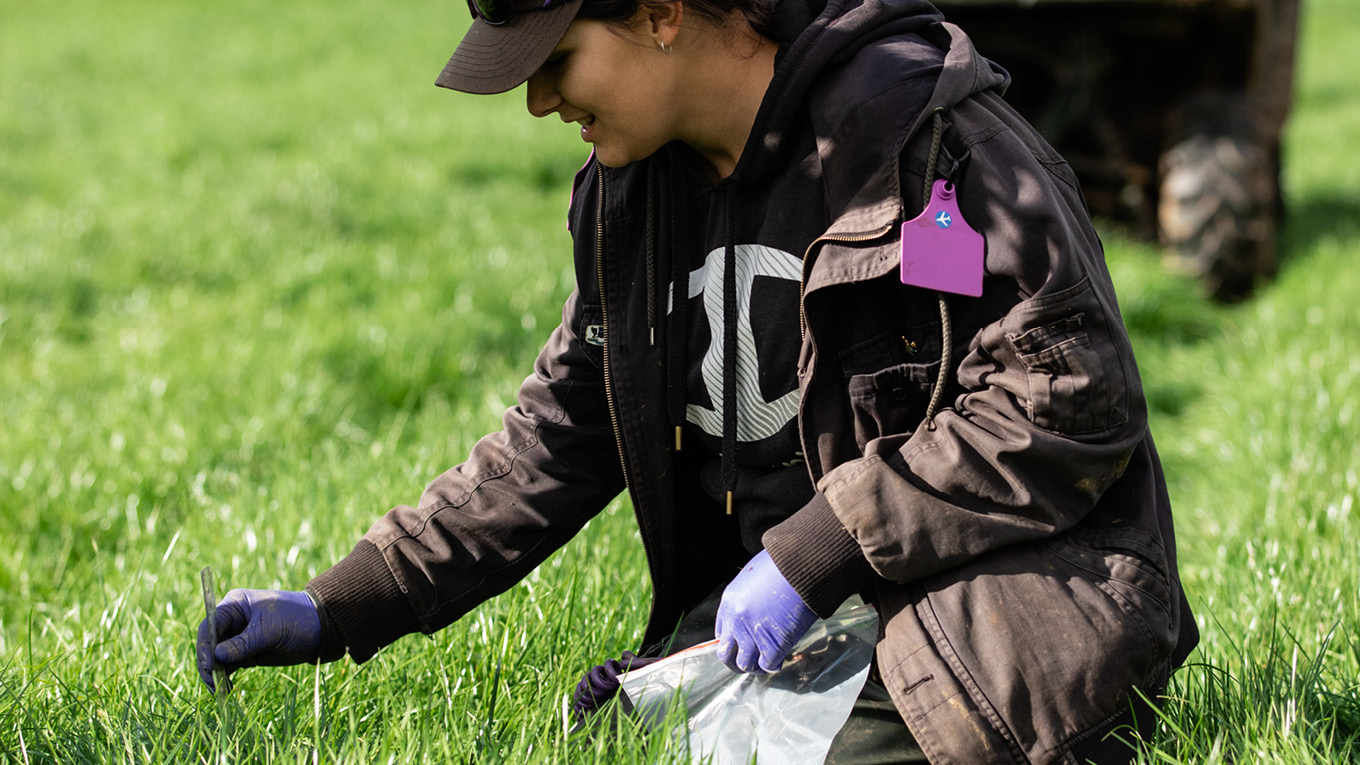Managing quality & supply risks when buying feed
When fodder availability is limited, it can be tempting to buy whatever feed is available. While there are numerous fodder sources suitable for dairy stock, they vary in nutritive value, digestibility and physically effective fibre value. They may also present risks such as ruminal acidosis, mycotoxins and chemical residues. Special care should be taken when using by-products such as grape marc.
Feed testing should be used to see how the feed stacks up in terms of its relative cost per unit of energy and protein. Feeds that offer the best value should be used. It is important to be clear about whether a particular type of feed is being purchased for energy, protein or some other specific purpose.
Each load of feed delivered to the farm should be checked for its quality and quantity to ensure it aligns with what is specified in the purchase agreement. If not, the purchaser has the right to reject it.
In addition, consideration should be given as to whether the farm’s feed storage facilities will be adequate for the volumes and types of feeds being purchased and used. Feed is too valuable to waste through poor storage.
More information on this can be found in the Managing quality and supply risks when buying feed fact sheet.
Also additional information relevant to this topic can be found in the following fact sheets.
Downloads
-
Facts about fibre factsheetPDF, 102.83 KB
-
Facts on alternative fibre sources 2018PDF, 2.48 MB
-
Feed budgeting factsheetPDF, 390.99 KB
-
Feed planning feed additives factsheetPDF, 70.76 KB
-
Keeping cows on the curve when changing dietsPDF, 115.62 KB
-
Managing quality supply risks feed planning factsheetPDF, 109.38 KB
-
Reducing feed wastage cost factsheetPDF, 156.1 KB
This video with nutritionist Steve Little provides a comprehensive overview of the recommended process when sampling, buying, storing and delivering feed to cows.
